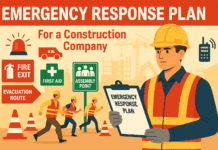
Musculoskeletal Disorder Prevention: Effective Lifting Techniques and Ergonomic Tools
Introduction
Musculoskeletal disorders (MSDs) are a common concern in various workplaces, often arising from improper lifting techniques and inadequate ergonomic tools. This article focuses on preventive measures, emphasizing effective lifting techniques and the use of ergonomic tools to reduce the risk of MSDs and promote a healthier and safer work environment.
Understanding Musculoskeletal Disorders (MSDs)
- Common Causes
- Poor Ergonomics: Inadequate workplace design and tools contribute to MSDs.
- Improper Lifting: Lifting heavy objects using incorrect techniques can strain muscles and joints.
- Impact on Workers
- Reduced Productivity: Workers with MSDs may experience reduced productivity due to pain and discomfort.
- Absenteeism: Chronic MSDs can lead to increased absenteeism and long-term health issues.
- Preventive Approach
- Training and Education: Providing training on proper lifting techniques and promoting ergonomic awareness is key to preventing MSDs.
- Use of Ergonomic Tools: Implementing ergonomic tools can significantly reduce the physical strain on workers.
Effective Lifting Techniques
- Proper Body Positioning
- Stable Stance: Keep feet shoulder-width apart for stability.
- Bend at the Knees: Bend at the knees, not the waist, when lifting.
- Close to the Body Lifts
- Keep Objects Close: Hold objects close to the body to reduce strain on the back.
- Avoid Twisting: Minimize twisting movements while lifting.
- Use of Leg Muscles
- Lift with the Legs: Engage leg muscles when lifting, pushing, or pulling heavy items.
- Avoid Overreaching: Keep the load within a comfortable reach to avoid overextension.
- Team Lifting
- Collaborative Effort: For heavier items, involve a second person to share the load.
- Effective Communication: Ensure clear communication and coordination during team lifts.
- Gradual Movements
- Avoid Sudden Jerks: Lift and lower objects gradually to reduce stress on muscles and joints.
- Take Breaks: Schedule breaks during prolonged lifting tasks to prevent fatigue.
Ergonomic Tools for MSD Prevention
- Lifting Aids
- Mechanical Lifts: Use mechanical lifts for heavy or awkward loads to minimize manual lifting.
- Conveyor Belts: Implement conveyor belts or rollers for easier movement of materials.
- Adjustable Workstations
- Sit-Stand Desks: Provide sit-stand desks to allow employees to alternate between sitting and standing.
- Height-Adjustable Tables: Enable adjustable table heights to accommodate various tasks.
- Ergonomic Chairs and Tools
- Supportive Chairs: Offer ergonomic chairs with lumbar support to maintain proper posture.
- Ergonomic Tools: Provide tools with ergonomic designs to reduce strain during repetitive tasks.
- Anti-Fatigue Mats
- Cushioned Mats: Place anti-fatigue mats in areas where employees stand for extended periods.
- Shock Absorption: Mats provide shock absorption, reducing stress on joints and muscles.
- Material Handling Equipment
- Pallet Jacks and Carts: Utilize pallet jacks and carts for efficient transportation of heavy loads.
- Dollies and Trolleys: Invest in dollies and trolleys to minimize manual carrying.
Creating an Ergonomic Workplace Culture
- Employee Involvement
- Training Programs: Conduct regular training programs on ergonomic practices and the proper use of tools.
- Feedback Channels: Establish channels for employees to provide feedback on ergonomic concerns.
- Regular Assessments
- Workstation Evaluations: Conduct ergonomic assessments of workstations to identify areas for improvement.
- Health Checks: Offer regular health checks to monitor and address early signs of MSDs.
- Promoting Breaks and Stretching
- Encourage Breaks: Promote the importance of taking regular breaks to prevent fatigue.
- Stretching Programs: Introduce workplace stretching programs to enhance flexibility and reduce muscle tension.
- Accessibility to Tools
- Tool Accessibility: Ensure easy access to ergonomic tools, encouraging their regular use.
- Tool Customization: Allow employees to customize their workspace with ergonomic tools that suit their needs.
Conclusion
Preventing musculoskeletal disorders requires a holistic approach that combines proper lifting techniques with the integration of ergonomic tools into the workplace. By prioritizing employee training, utilizing ergonomic aids, and fostering a culture of health and well-being, organizations can create environments where the risk of MSDs is significantly reduced. A proactive stance towards MSD prevention not only benefits the health and productivity of workers but also contributes to a positive and safety-oriented workplace culture.
Safety Training Program Evaluation: Measuring Effectiveness and Impact
Psychosocial Risk Assessment in the Workplace: Addressing Mental Health Concerns
Root Cause Analysis (RCA): Identifying and Addressing Underlying Causes of Safety Incidents
Risk Assessment and Hazard Identification: A Key Responsibility for Safety Officers
Personal Protective Equipment (PPE): Selection, Usage, and Maintenance for Safety Officers
Frequently Asked Questions (FAQs)
- What are common causes of musculoskeletal disorders (MSDs) in the workplace?
- Common causes of MSDs include poor ergonomics, improper lifting techniques, and inadequate workplace design.
- How can effective lifting techniques help prevent MSDs?
- Effective lifting techniques involve proper body positioning, close-to-body lifts, use of leg muscles, team lifting, and gradual movements, all of which contribute to reducing strain on muscles and joints.
- What are some ergonomic tools that can help prevent MSDs?
- Ergonomic tools for MSD prevention include lifting aids such as mechanical lifts and conveyor belts, adjustable workstations like sit-stand desks, supportive chairs, ergonomic tools, anti-fatigue mats, and material handling equipment like pallet jacks and carts.
- How can organizations create an ergonomic workplace culture?
- Organizations can create an ergonomic workplace culture by involving employees in training programs, conducting regular ergonomic assessments, promoting breaks and stretching, and ensuring accessibility to ergonomic tools. This fosters a culture of health, well-being, and safety.
- Why is preventing musculoskeletal disorders important for organizations?
- Preventing MSDs is important for organizations as it contributes to the health and well-being of employees, reduces the risk of workplace injuries, enhances productivity, and fosters a positive workplace culture focused on safety and employee care.
























